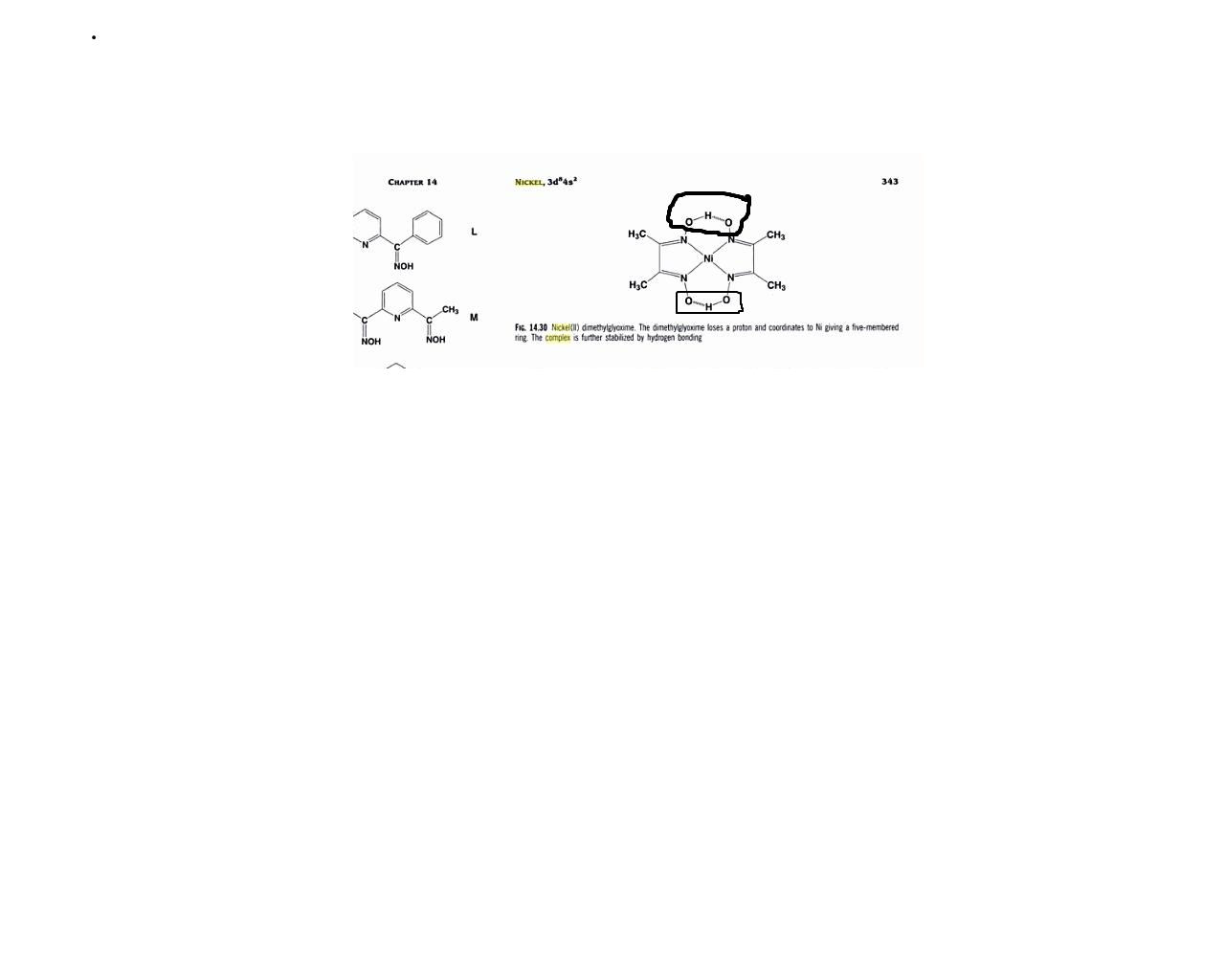-
Posts
57 -
Joined
-
Last visited
Content Type
Profiles
Forums
Events
Everything posted by amit
-
my teacher recently asked me how to seperate mixture of succinic acid and succinic anhydride in to pure components? my answers ranged from simple base neutraizations to metal complex formation. but i think most suitable way would be to separate by different solubility in some solvent. any guesses?
-
in first step free radical will be generated hence substitution on aromatic ring is unlikely. Br radical would prefer secondry position on propyl chain ie at position 3 (numbering the c attached to ring as 1) as then radical formed will have resonance stablizing effect of phenyl ring. i also think second step is formation of double bond. third one is hydro boration reaction with introduction of alcohol
-
here is an example of h bonds between acetone molecules. so in ether it might be there but unsignificantly weak. wikipedia also says about h bonds between acetone http://books.google.com/books?id=be0T64ZWp9EC&pg=PA211&lpg=PA211&dq=manku,+hydrogen+bonding&source=bl&ots=5NxzqpHuhM&sig=BsxXqR1qOlqcH229JBJN8yw6sEI&hl=en&ei=w8J2S5GWK8qwrAf77qT1Dw&sa=X&oi=book_result&ct=result&resnum=1&ved=0CAcQ6AEwAA#v=onepage&q=&f=false sorry o tried but cant upload the specific page tthis time but try page no-213
-
few years back i heard of few substances that are short chain polymers sort of substances but they are badly entangeled. so if you apply any sudden mechanical shock to them they behave as solids but if you try lifting them in hand they will flow away like liquids. sorry for such immature description but thats only what i remember.
-
i dont think ammonium nitrate is a crappy explosive. its was used in oklahoma city bombings, and and that waxy coatings are indeed to prevent caking of AN. But while googling it i found this link http://www.worldofcoalash.org/2009/ashpdf/a078-taulbee2009.pdf here they are using by products of coal ash to prevent explosion (thats what i have understood from it:embarass:) also on wikipedia its written :"Ammonium nitrate decomposes into gases including oxygen when heated (non-explosive reaction); however, ammonium nitrate can be induced to decompose explosively by detonation." so dont u think "pop" could have been because of that decomposition and oxygen might have to play a role in it?? also i read about the coating many years ago in newspaper there was also mentioned that those granuals can be crushed using the coffe bean grounding machines and then can be used as an explosive.
-
i've read in a book (unified approach to inorganic chemistry by w potterfield to be exact) that although ammonium nitrate is a powerful explosive (if i remember correctly united states gives granuals of it coated with wax like substance to farmers so that terrorists cant use it) but its very hard to detonate hence its unlikely that in the test tube it was kind of explosion. rather it should be rapid decomposition. nitrates are first choice as explosives as after reaction they form gases loke N2, O2, H2O which are very stable hence highly exothermic. so cant there be formation of N2O in small quantities along with N2 etc which went undetected? hence the small pop...
-
its written there "HeH+ cannot be stored any where as it can protonate almost every known compound" hence its usage etc are out of questions( atleast for now) its just testing how far can we can go! this compound is called helium hydride there then shouldn't it be HeH-
-
well my simple logic was that higher the charge on nucleus higher will be the attraction felt by electron. as electrostatic energy is E=k (Q1*Q2)/r^2 now since considering Q2= charge of electron=-e, hence greater the Q1 more negative hence smaller will be the energy. and same term can be used in shrodinger equation for P.E http://www.chemistry.mcmaster.ca/esam/Chapter_3/fig3-8.jpg here it can be seen that lower the n more penetrated it is as most probanle r increases with n. hence 1s is most penetrating
-
1. Orbitals in many-electron atoms are lower in energy than the hydrogenic orbital. i think they are talking about corresponding orbitals of hydrogen and other elements. here due to higer charge on nucleus will result in higher attraction hence lower energy. ie 1s e- of other elements will de lower than the 1se- of H similarly 2s,2p... of others will be of lower energy then that of hydrogen. . d orbitals are poorly shielded so that nd orbital is of slightly higher energy than (n+1)s orbital for a gasesous element. e.g. ...4s<3d...! i dont know as far i have read d orbitals shield poorly. but they are very vell shielded
-
dont u all think that corrosiveness cant be the scale of strength as it also depends on the surface on which acid is acting. dissociation constant of HCl >HF still HF can Corrode glass. also just for the fact wikipedia lists HeH+ as the strongest acid in terms of PKa values(-62).
-

Potassium manganate --> Potassium permanganate HELP
amit replied to jerryshizzle123's topic in Inorganic Chemistry
standard potential for reaction Cl2(g) + 2 e− ⇄ 2 Cl− +1.36 MnO4− + H+ + e− ⇄ HMnO4− +0.90 therefore free energy change for above reactions coupled should be -(2*1.36*F - 2*.9*F) (G=-nFE) = -2*.46*F as the above value is -ve hence i believe 2MnO42-+2Cl2=Mno4- is thermodynamically possible (dont know about practical implications) is there something wrong in my calculations? in lab we used PbO2 for qualitative identification of Mn2+ as solution turned pink due to formation of MnO42- -
i think they can. thats how i believe epoxy resins works. amines forms cross linking polymers. http://www.scienceforums.net/forum/showthread.php?t=32771 read posts of dr p on this thread
-
dont u think its little lame anti theft method. i mean if i have shoplifted some product it wont matter to me that some thing has appeared on its label. anti theft measures are supposed to stop the theft and not the uses
-
what about some sort of organic molecules which reacts in presence of light. or something used in photo chromic glasses. wikipedia lists oxazines as one such compound but its higly hazardous. or why not some thing more exotic like becoming visible in presence of magnetic field. eg http://www.freepatentsonline.com/7268104.html whether they can turn tranparent? no where mentioned
-
i have noticed one thing that when ever ice cream is freezed in refrigerator the ice chips or crystals are usually in the lower half. dont u all think it might also have to with fact that milk is a composite liquid much like a emulsion or mix. so what if i turn my container upside down every few min. will the texture be smooth now?
-
i dont know about carbonates and phosphates etc as we just sent the samples to a lab and they gave us total content of carbon, nitrogen and phosphate. so as stereologist said consult some soil or enviroment related journals.
-
finding about composition of soil is really a broad thing. soil basically can have everything so iy really depends on what are u looking at. i have done a summe research project on soil where we tried to find total amount of lead in soil. proceeding were like remove lead bind in different forms (organically bound. inorganically bound, free lead etc) for each type of lead we employed different reagents and stirred it for long then on filtering we performed the next step on same sample thus getting total amount of lead.
-
google doesn't have preview of the book from where i read. there are 6 factors given, i wont explain them (short of time and money to spend on internet) size of ligand, configuration(d0,d2,d5,d7,d10 are symetric in tetra as it have 2 orbitals of low energy 3 of higher one against octa where its vise versa, strength of ligand, oxidation state of central metal ion(low state low field splitting) loss of cfse(crystal field stabelization energy) is small eg d1, d6 states loss of cfse=.13 of octahedral also halides (except f) prefer tetra page 221 ,coincise inorganic chemistry j d lee read this text it will lift the curtains of ignorance from your eyes!
-
jahn taller effect is usually used in explaining diff. bw octahedral and square planer complexes. field splitting (and hence stability) is always greater in octa hedral complexes as tetra hedral complexes have field splitting=4/9 of octahedral. hence tetra hedral are formed : 1) when ligand is weak so dufference in splitting is not that much. 2)tetra hedral arrangements are symmetrical. have u consulted any text book? its a question came recently in my university exam. i can write whole ans. but wont it be against sfn's policies of only giving hints
-
dont know about vbt but cft can sure help in predicting. try any good text book like one by j d lee. when energy stabalization difference b/w octa and terta is less we can tell. also symmetry is a factor
-
it was a shock. i have never thought that. what happens to electrons in the shell of uranium after decay? i believe they must stay there but now the atom should be negatively charge? outer electrons will be less strongly bound?i cant undertstand it either. if we take elemental uranium and it decays then will the extra electrons just fly away in space? if not wont we have -ve charged particles repelling each other strongly?
-
cant we reduce it using copper or some other easily available metal an hydrogen gas which could be collected from electrolysis of water. we can put all this stuff in sealed container and heat up a little ( carefully as hydyogen is involved i might result in some sort of accident)
-
damn it .:doh::doh::doh::embarass::mad: second blunder in 2 days. anyways we are back to original problem that what went white?
-
well i have tried and uploaded the pic. and circled the water molecules that may have removed according to me. as a latest update that white powder turned green
-
do u even know which book i m talking about? actually i tried re reading that book and realised i goofed up things little badly. i found that book on google books here is a link :- http://books.google.co.in/books?id=be0T64ZWp9EC&dq=inorganic+chemistry+,manku&printsec=frontcover&source=bl&ots=5NuxwrFxlK&sig=KvxdqrgDBsfR6jehkH4lrkpmZ8w&hl=en&ei=JeqXSdT1A4G86gP5uez4CA&sa=X&oi=book_result&resnum=1&ct=result look page 215. actually there is the talk about h bonds of acetylene and data about C-H...O bonds due to which i thought that h-bonds may be in hydrocarbons also....


